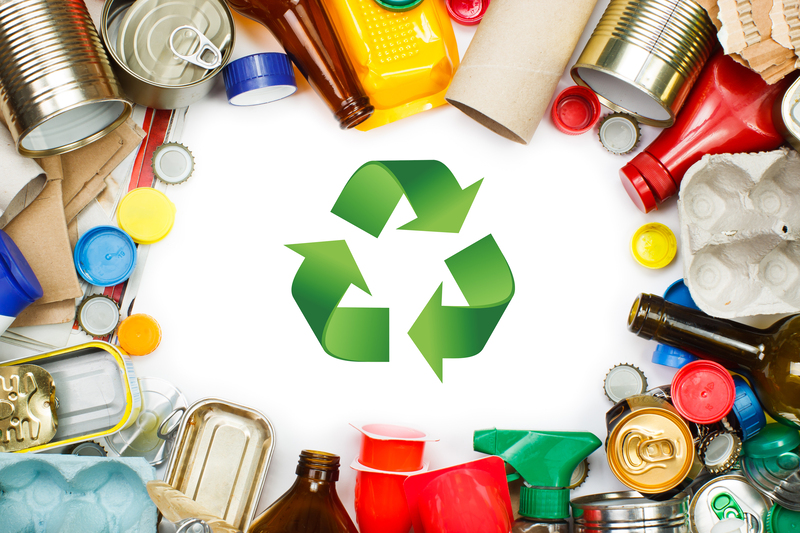Best Practices for Disposing of Damaged Pots and Pans
When your favorite cookware is beyond repair, knowing how to dispose of damaged pots and pans responsibly is crucial to reduce landfill waste and protect the environment. In this comprehensive guide, we'll explore a variety of eco-friendly options, recycling tips, creative repurposing ideas, and the best practices for getting rid of unusable cookware.
Why Proper Disposal of Pots and Pans Matters
Old or damaged pots and pans can often contain materials such as aluminum, stainless steel, Teflon, or ceramics that may not decompose in landfills for centuries. Throwing them out with your regular garbage contributes to environmental issues and misses the opportunity to recover valuable resources. Adopting the right disposal methods for pots and pans ensures sustainability and responsible consumption.
- Reduces landfill waste
- Allows materials to be recycled and reused
- Prevents release of harmful chemicals
- Helps protect the environment

Evaluating the Condition: Can Damaged Cookware Be Repaired or Repurposed?
Before deciding on disposal, examine your pots and pans to determine their actual condition. Are they warped, chipped, or coated with a peeled non-stick surface? Can they still serve another purpose in or out of the kitchen?
Common Types of Damage
- Warping: Often caused by exposure to sudden temperature changes or poor-quality materials.
- Chips and cracks: Typical of ceramic, enamel, and glass cookware.
- Peeling non-stick coating: Indicates the pan is no longer food-safe and should not be used for cooking.
- Rust: Appears on unseasoned or neglected cast iron and steel pans.
Can It Be Fixed? When to Repair vs. Dispose
- Minor warping may be tolerable, but significant distortion makes pots unsafe.
- Cracked ceramic or glass cookware should be discarded for safety reasons.
- Peeling or flaking non-stick coatings cannot be restored; disposal is best.
- Rusty cast iron can often be restored by scrubbing and reseasoning, but severe rust may require discarding.
Eco-Friendly Disposal Options for Damaged Pots and Pans
Once you've determined your cookware is beyond repair, it's time to explore responsible ways to dispose of it. Here are the smartest, most sustainable methods:
1. Recycle Metal Pots and Pans
Most pots and pans are made from metal--such as aluminum, stainless steel, or cast iron--which are recyclable. However, they shouldn't be put in curbside bins unless your local recycling program accepts scrap metal.
How to Recycle Pots and Pans- Check your municipality's recycling rules for large metal items.
- Locate a scrap metal recycling facility near you.
- Remove any plastic, rubber, or wooden handles before recycling.
- Rinse pans to remove food residue before drop-off.
Tip: Even non-stick pans can sometimes be recycled as scrap metal, but check with your facility first, as some coatings may need to be removed.
2. Drop Off at Household Waste or Special Collection Events
- Some towns host special "hard-to-recycle" days or household waste events. Bring your old cookware along with other scrap metals.
- Search your local government website for upcoming collection days or facilities that accept kitchenware.
3. Donate Usable Pans to Charities or Thrift Stores
If your pans are still usable but no longer needed, consider donation as one of the best ways to dispose of pans sustainably:
- Non-profits, shelters, or thrift stores will gladly accept functioning cookware.
- Ensure items are clean and free of significant damage.
4. Creative Upcycling and Repurposing Damaged Cookware
Get creative before throwing away old pots and pans--they can live on as planters, storage bins, or even art! Upcycling is both eco-friendly and fun.
Upcycling Ideas:- Planters: Drill drainage holes and use as outdoor or indoor pots.
- Organizers: Repurpose deep pots as holders for tools, utensils, or craft supplies.
- Decor: Old pans can become clocks, mirrors, or wall art with a bit of paint and imagination.
- Bird Feeders: Hang a shallow pan with rope to create a rustic feeder.
- Stepping stones: Fill a pan with concrete for a unique garden path.
Upcycling damaged cookware keeps materials out of landfills and makes for unique household projects.
5. Responsible Trash Disposal as a Last Resort
If no recycling or reuse options are available and your cookware is beyond salvaging, wrap broken pieces (especially glass or ceramic) in newspaper or bubble wrap to prevent injury. Clearly label them before placing in the trash.
- Check with your waste management company for rules on bulky items or sharp objects.
- Never discard large numbers of pots and pans at once. Space them out to avoid overloading bins.
Special Considerations by Material Type
Not all cookware can be handled the same way. Here's how to dispose of various types of damaged pans and pots:
Non-Stick (Teflon-Coated) Cookware
- Do Not Burn old non-stick pans; the coating can emit toxic fumes.
- Check with the manufacturer or recycling facility about safe disposal. Some brands offer take-back programs.
- Remove handles and bag securely before traditional disposal if recycling isn't possible.
Ceramic and Glass Pots
- Most curbside recycling programs do not accept ceramics or glass cookware, as they have different melting points than container glass.
- Check for local "ceramics recycling" events, or consider upcycling into mosaics or planters.
- For disposal, wrap in paper and clearly mark the package.
Cast Iron and Stainless Steel
- Highly recyclable--take to scrap metal facilities.
- Cast iron pans with minor rust can often be restored and reused or donated.
Aluminum Cookware
- Lightweight and valuable as scrap metal.
- Remove non-metal components before recycling.
Copper Pans
- Copper is a valuable metal--look for local copper recycling or scrap yards.
Manufacturer Take-Back Programs and Warranties
Some cookware brands support sustainable disposal by offering take-back or recycling programs for their old or damaged products. Check the brand's website to see if they accept cookware returns or offer special recycling partnerships. Some companies will even ship a replacement if your cookware is still under warranty!
- Research "brand name + cookware recycling" for details.
- Contact customer service to ask about take-back or buyback options.
FAQs on How to Dispose of Damaged Pots and Pans
Can I put old pots and pans in my curbside recycling bin?
Usually, no. Most curbside recycling programs are not equipped for cookware or large scrap metal items. Instead, take them to a local recycling center or scrap yard.
Are non-stick pans recyclable?
In many cases, the metal is recyclable, but the non-stick coating may not be. Check locally and consider take-back programs or upcycling alternatives.
What should I do if my cookware is too damaged even for scrap?
If the item is truly unsalvageable and not accepted for recycling, carefully wrap and dispose of it in your regular trash, following all local safety guidelines.

Tips on Reducing Future Cookware Waste
- Buy high-quality, long-lasting cookware that resists warping and damage.
- Care for and maintain your pots and pans to extend their lifespan.
- Avoid non-stick coatings if possible, opting for stainless steel or cast iron for better recyclability.
- Repair and reseason cast iron pans instead of discarding them.
- Donate or sell functional items rather than throwing them away.
Conclusion: Choose Sustainable Solutions for Old Cookware Disposal
Disposing of damaged cookware doesn't have to be a burden on the environment. With many eco-friendly ways to get rid of damaged pots and pans, you can make choices that benefit your home and the planet. From recycling metal pots at scrap yards to transforming battered pans into creative family projects, responsible disposal is easy and rewarding.
Remember to always research your local recycling rules, consider donation and reuse first, and seek out manufacturer take-back programs for a truly sustainable kitchen. By following best practices for disposing of damaged pots and pans, you support a healthier, greener future for us all.
Ready to upgrade your cookware? Make responsible choices today and set an example for sustainable living!
